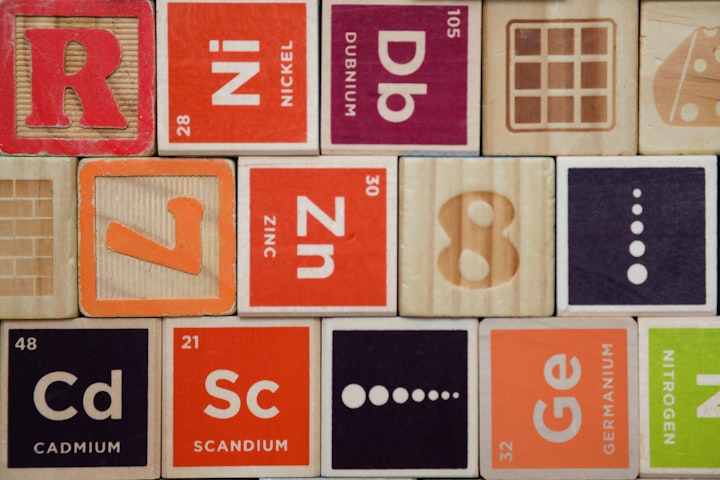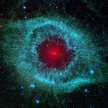Exploring the Elemental Universe: From Hydrogen to Oganesson
Short, easy-to-understand explanations of the elements

British spelling.
The five lightest elements in the universe.
<><><>
1/5
I’m a Hydrogen Atom (H) With Atomic Number 1
By far, I am the most abundant chemical element in the universe.
I am the oldest, lightest, and most abundant element in the universe, making up 74% of its mass.
I did not exist in the early universe because the conditions were too hot, but around 380,000 years after the universe's birth, the cooler conditions enabled me to become a true atom.
My nucleus is just one proton, and one spinning electron circles my nucleus. That's the reason I am the lightest of the 118 elements.
<>
Stellar nucleosynthesis is the process by which atoms are created within stars, intense heat in the core of stars triggers nuclear fusion starting the production of heavier atoms.
I intend to describe every type of atom in simple terms, beginning with hydrogen and ending with oganesson.
<><><>
2/5
I’m a Helium Atom (He) With Atomic Number 2
I am the second most abundant chemical element in the universe.
Two electrons circle my nucleus, composed of two protons and two neutrons.
At this time, I am being created in the fiery cores of stars.
My age is slightly less than the most abundant chemical element, hydrogen, but I still make up 25% of all the mass in the universe.
<>
Helium is known best for filling party balloons, but it has many other important uses, including medical technology, scientific research, and space exploration.
Being so light means that hydrogen and helium can escape into space, but there is no need to panic; the amount of gas leaving the Earth’s atmosphere is minimal compared to the vast quantities on Earth.
<><><>
3/5
I'm a Lithium Atom (Li) With Atomic Number 3
I, hydrogen, and helium came into existence just after the universe's birth.
At the beginning of the universe, hydrogen and helium made up 99% of its mass; my contribution was a mere 1%.
Having three protons and four neutrons in my nucleus makes me heavier than hydrogen and helium atoms.
At room temperature, my state is a solid, soft alkali metal.
<>
Room temperature can be described as 20–22 degrees Celsius or 68–72 degrees Fahrenheit.
Lithium has many uses, including heat-resistant glass and ceramics, flux additives for iron and steel, and aluminium production.
Lithium is also associated with batteries. Lithium metal and lithium-ion batteries use a large percentage of the total production of lithium, and the demand keeps growing.
The Earth has approximately 88 million metric tonnes of lithium that can be mined.
<><><>
4/5
I'm a Beryllium Atom (Be) With Atomic Number 4
I wasn't around at the beginning of the universe.
Two chemical elements dominated the early universe: hydrogen and helium.
I'm a solid metal at room temperature, stronger than steel and lighter than aluminium, but harmful to humans if inhaled.
<>
Beryllium is rare in the universe, contributing only 1%.
There were no stars in the early universe; millions of years after the Big Bang, hydrogen and helium came together in massive clouds, forming the first stars.
Cosmic ray fission was responsible for the creation of beryllium.
Because of its strength, lightness, and resistance to extreme temperatures, beryllium was chosen to construct the primary mirror on the James Webb Space Telescope.
<><><>
5/5
I'm a Boron Atom (B) With Atomic Number 5
Regarding mass, how abundant am I in the universe? The answer is 0.0001% or one ten-thousandth of 1%.
I wasn't created in stars but in high-speed cosmic ray collisions (fission). Nuclei can be fragmented through spallation, and the outcome can be elements such as me.
At room temperature, I am a solid.
<>
Cosmic rays are high-energy particles travelling through space.
A boron atom contains five protons, six neutrons, and five electrons.
Boron is an important structural component of plants. It is required for plant growth, seed formation, and pollination.
Without plants, we would not exist. Although boron is scarce in the universe, its importance on Earth cannot be underrated.
Boron is used in the manufacture of glass and ceramics, fertilizers, detergents, and bleaches.
<>
To be continued.
About the Creator
A B Forbes
Someone with a lifelong passion for that gargantuan area we call the universe. I also write stories about life itself. Enjoy






Comments
There are no comments for this story
Be the first to respond and start the conversation.